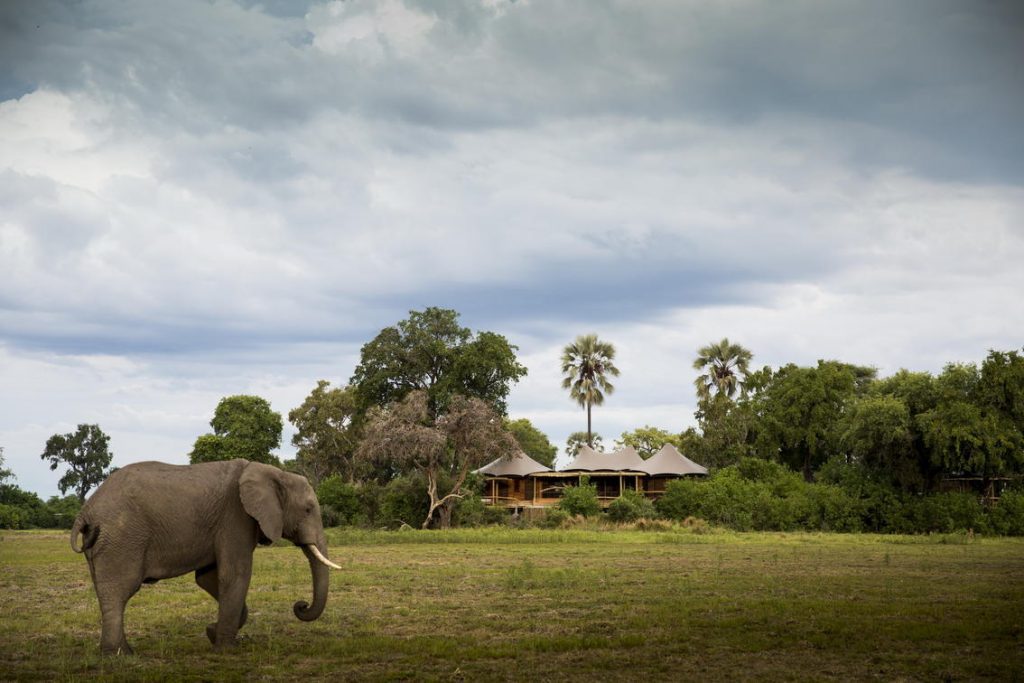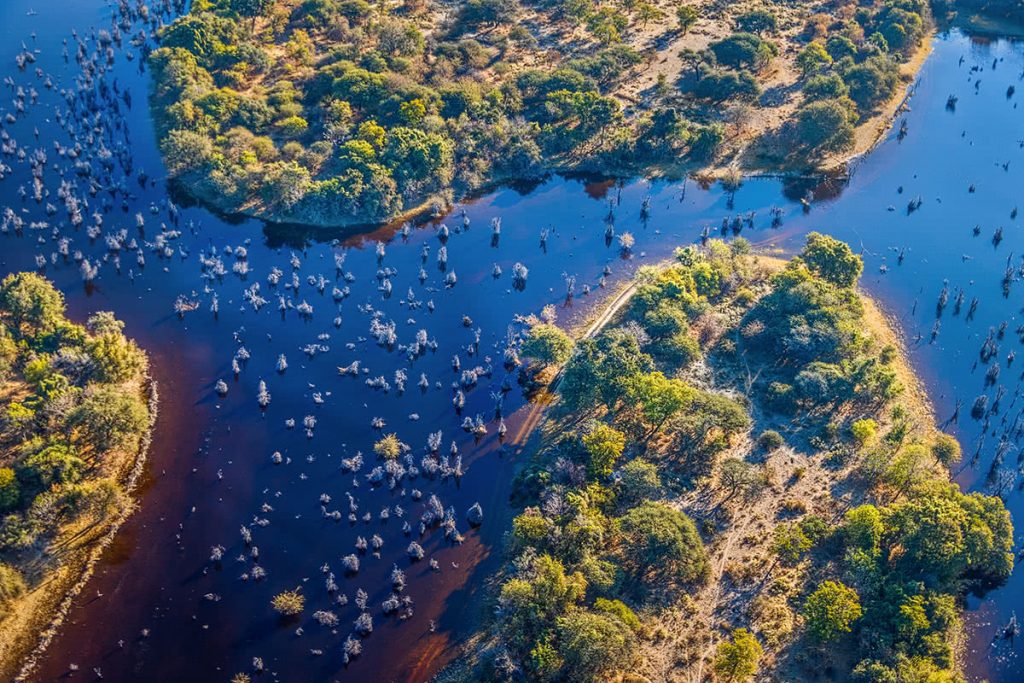For many, Botswana is the ultimate safari bucket list destination. One look at the floodplains of the Okavango Delta and it isn’t hard to see why. The Okavango Delta is hands down one of the most romantic, ethereal destinations in all of Africa. It just doesn’t get any more peaceful and effortlessly beautiful than this epic wetland known as the river that never meets the sea.
So if you’re considering Botswana as your next safari destination, you might be wondering: what are the water levels like in Botswana right now? Or, when is the best time to visit?
We’re happy to report that for the first time in years, the Okavango Delta water levels are quite high and the floodplains are full. The flood levels have been low for the last five years, even with some years experiencing little to no rain. But the good news is, the water levels are at a high and water safaris are in full swing as we move through peak season in Botswana!

Why have the water levels been low in the last five years?
Over the past few years, the Okavango Delta has been experiencing very low water levels. But to understand why water levels have been low in recent years, it is important to know where the water that fills the Delta comes from.
The water supplying the Okavango Delta in fact comes from the rains in Angola, despite the countries not sharing a border. These waters travel quite a distance before supplying the Delta and bringing visitors to Botswana from all around the world.
Summer rains that occur between October and April in Angola feed the Cubango and Cuito rivers, as they are known in Angola. These filters through Namibia and turn into the Kavango River. Then, as the waters reach Botswana, it becomes the Okavango Delta.
Because of the way the water travels slowly, the summer rains that begin in Angola do not reach Botswana’s Okavango Delta until sometime in May, June, or even sometimes July. This of course varies from camp to camp, depending on their location, as well as how much rain occurred that season.
What can be confusing is that the flooding season in Botswana is also known as the “dry season”. That is because while the area floods from waters traveling down from Angola, at this time of year there is no rain falling in Botswana itself.
The last five years have seen particularly low levels of water arriving in the Okavango Delta, which can be from a variety of different reasons that were explored quite in-depth in this documentary. This is quite an interesting and educational film, so if you’re planning a trip to Botswana and would like to better understand the Okavango Delta, we highly recommend it!

What can I expect in the Okavango Delta in 2021?
So now that you understand how the water feeds through to the Okavango Delta, you might be wondering, what are the water conditions like now?
We are beyond thrilled to share that the Okavango Delta is experiencing incredible water levels this year. Water safaris are in full swing and in many parts of the Delta, you can take the opportunity to experience a traditional mokoro safari (dugout canoe). This is, of course, why travelers venture from far and wide to the Okavango, for an experience you can’t have anywhere else.
We’re delighted to share that this year’s rainfall has brought life back into the Delta. Riverbeds that have been dry for the last few years are now flooded with water, wildlife and adventures to be had!
So, what are you waiting for? Ubuntu Travel founders, Kyle & Leah Green, will be visiting the Delta in mid-July to get a taste of the action for themselves. They couldn’t wait to see the full floodplains and experience water safaris after being away from the bush for a few months. Stay tuned to follow along with their upcoming adventure.




